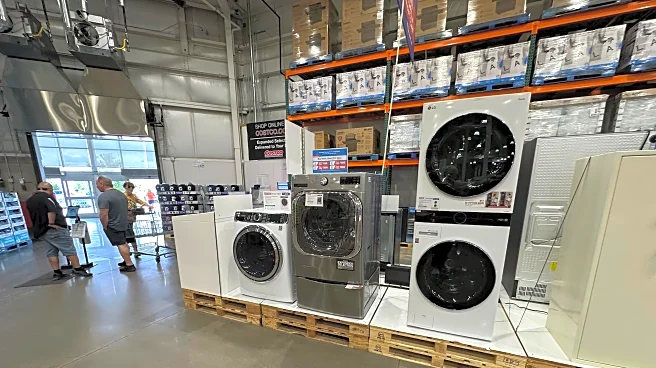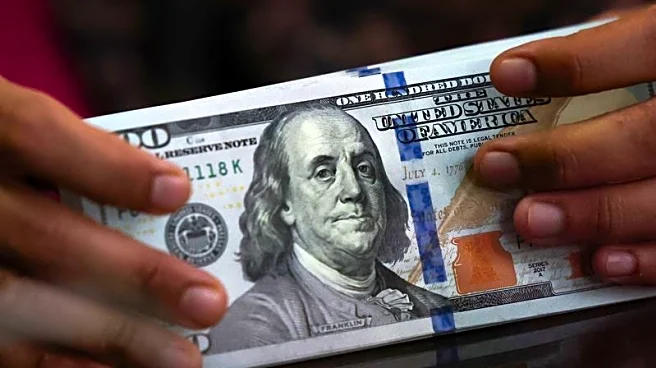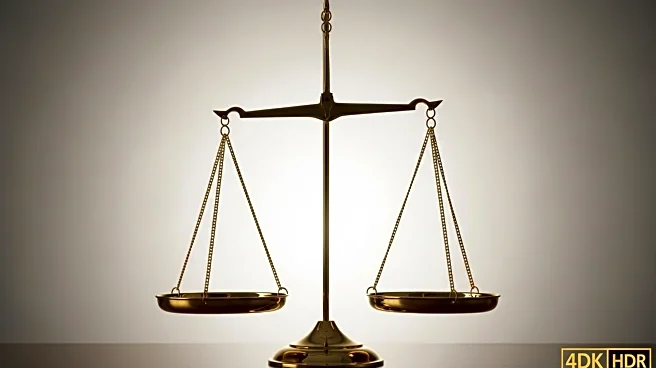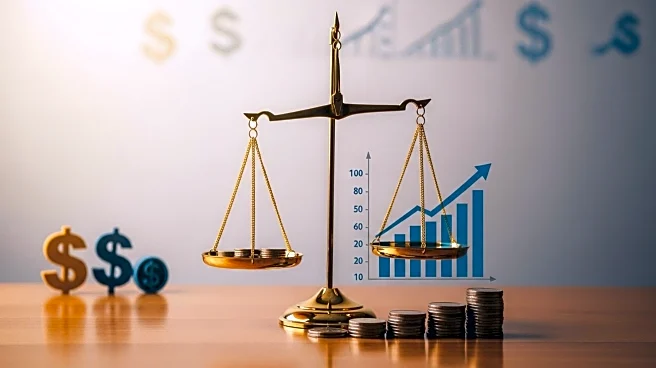What's Happening?
Inflation in the U.S. rose to 2.9% in August, marking the highest increase since January, according to the Labor Department. The Consumer Price Index (CPI) increased by 0.4% from July to August, driven by rising costs in gas, groceries, hotel rooms, airfares, and used cars. Core inflation, excluding food and energy, remained at 3.1%, above the Federal Reserve's 2% target. The Federal Reserve is under pressure from President Trump to cut interest rates, despite the persistent inflation and weakening job market. The unemployment rate increased to 4.3% in August, and weekly unemployment claims have risen, indicating potential layoffs.
Why It's Important?
The inflation data presents a dilemma for the Federal Reserve, which typically cuts rates to stimulate spending when unemployment rises. However, rising inflation usually prompts rate hikes or stability to prevent overheating. The Fed's decision is crucial as it balances the need to support a weakening job market against controlling inflation. President Trump's pressure to lower rates adds complexity to the Fed's policy decisions, potentially impacting economic growth and consumer spending. The outcome of the Fed's meeting could influence market confidence and economic stability.
What's Next?
The Federal Reserve is expected to cut its short-term rate from 4.3% to about 4.1% in its upcoming meeting. This decision will be closely watched by stakeholders, including businesses and investors, as it could signal the Fed's approach to managing inflation and supporting the labor market. The legal dispute over President Trump's attempt to fire Fed governor Lisa Cook may also affect the Fed's independence and future policy decisions.













